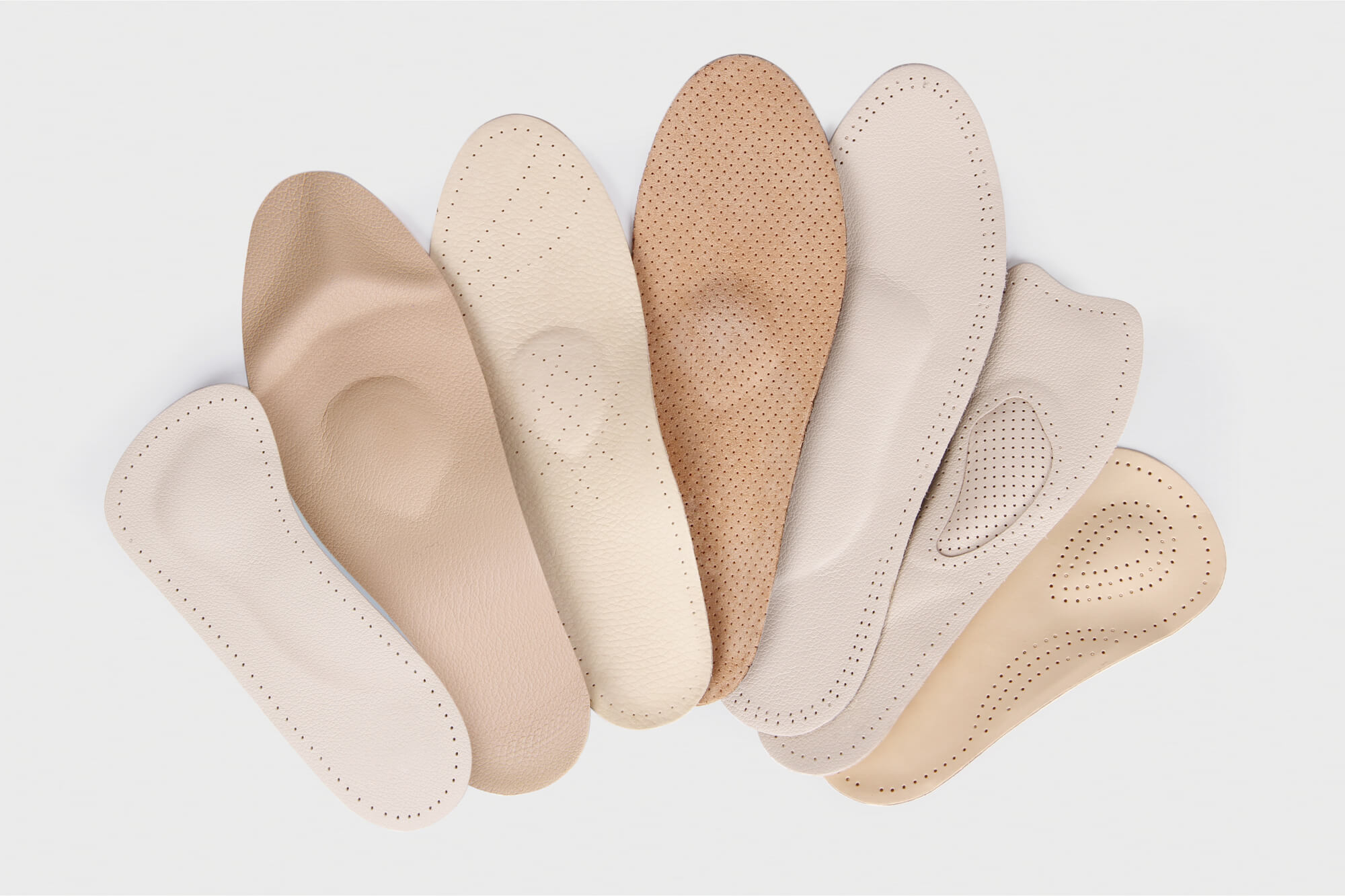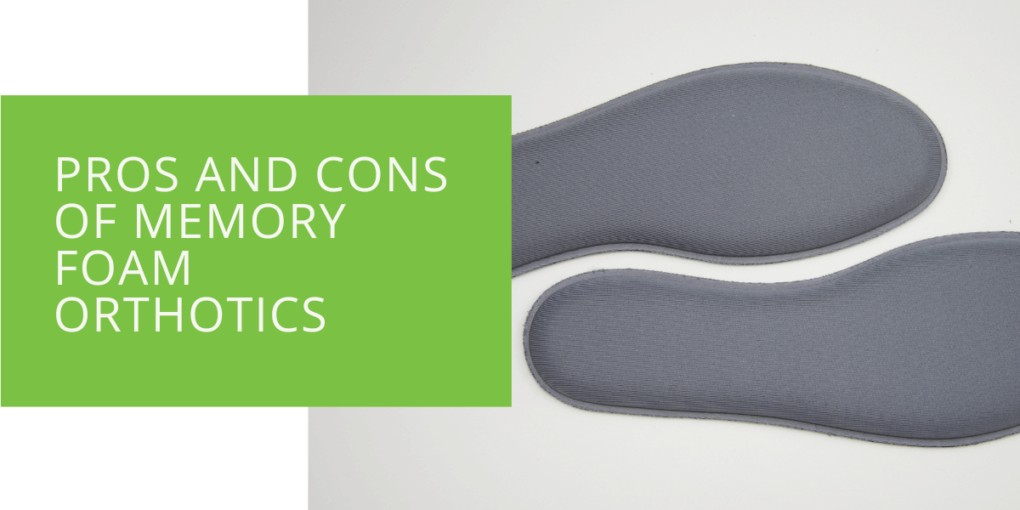Pros and Cons of Memory Foam Orthotics
Orthotics play a crucial role in maintaining foot health, and memory foam orthotics have gained popularity in recent years. This article will explore the pros and cons of memory foam orthotics, their unique characteristics, and how they can provide optimal cushioning, pressure relief, and customization. Whether you're dealing with foot pain, plantar fasciitis, or simply seeking a comfortable pair of shoes, understanding the benefits and limitations of memory foam orthotics will help you make an informed decision.
Understanding Memory Foam Orthotics
Memory foam is a polyurethane-based material known for its ability to contour and mold to the shape of an individual's foot. Unlike traditional foam insoles, memory foam insoles provide higher support and cushioning, making them an attractive choice for many.
Pros of Memory Foam Orthotics
Superior Cushioning and Comfort
One of the primary advantages of memory foam orthotics is their exceptional cushioning and comfort. The unique composition of memory foam allows it to respond to body heat and contour to the shape of the foot. This personalized fit provides a cloud-like experience, cradling the foot and relieving pressure points. The foam's ability to evenly distribute weight and absorb impact helps reduce strain on joints and provides a comfortable walking or running experience.
Furthermore, memory foam orthotics offer enhanced shock absorption. As the foam compresses under pressure, it absorbs the energy generated with each step, reducing the impact on the feet and lower limbs. This feature is particularly beneficial for athletes, individuals with an active lifestyle, or those with arthritis or plantar fasciitis.
Pressure Relief and Weight Distribution
Memory foam orthotics excel in providing effective pressure relief and distributing weight evenly across the foot. By conforming to the foot's unique contours, the foam helps reduce pressure on sensitive areas such as the heels and ball of the foot. This can be especially beneficial for individuals who spend long hours on their feet or those with diabetic foot or metatarsalgia.
The even weight distribution achieved with memory foam orthotics helps prevent the formation of blisters, calluses, and other foot problems caused by excessive pressure. By minimizing pressure points, these orthotics promote proper foot mechanics and reduce the risk of discomfort or injuries associated with uneven weight distribution.
Customizable Support
One of the key advantages of memory foam orthotics is their ability to provide customizable support. The foam gradually adjusts to the foot's shape over time, creating a personalized fit that enhances comfort and stability. This feature is particularly valuable for individuals with foot conditions such as flat feet or high arches, as memory foam orthotics can provide targeted support to address specific needs.
Moreover, memory foam orthotics offer enhanced arch support. The foam molds to the arch of the foot, providing the necessary stability and alignment. This support helps promote proper foot posture and reduces strain on the arch and surrounding structures. By addressing issues like overpronation or supination, memory foam orthotics improve foot mechanics and can help alleviate associated discomfort.
Moisture-Wicking and Odor Control
While memory foam is known for its tendency to retain body heat, many modern memory foam orthotics incorporate moisture-wicking properties and breathable materials. These features help manage sweat and prevent odor buildup, keeping the feet dry and fresh. This is particularly beneficial for individuals with sweaty feet or those living in warm climates, as the improved moisture control enhances overall foot hygiene and comfort.

Cons of Memory Foam Orthotics
While memory foam orthotics offer numerous benefits, it's important to consider the potential drawbacks associated with their use. Here are some key considerations:
Heat Retention
Memory foam orthotics tend to retain body heat due to their dense structure. This can disadvantage individuals with naturally warm feet or those in hot climates. The heat trapped within the foam may lead to discomfort and excessive sweating. If you are prone to overheating or frequently experience sweaty feet, exploring alternative orthotic materials that offer better breathability and heat dissipation may be necessary.
Durability and Longevity
One limitation of memory foam orthotics is their durability and longevity. Over time, the foam can compress and lose its original shape, resulting in diminished support and cushioning. The rate of compression and wear varies depending on factors such as usage patterns, body weight, and the quality of the memory foam used. Regular replacement or refurbishment of memory foam orthotics is essential to ensure optimal support and cushioning. Additionally, proper care and maintenance, such as cleaning and allowing them to air out, can help prolong their lifespan.
Limited Rigidity and Support
While memory foam orthotics provide excellent cushioning and comfort, their soft nature may not offer the rigidity and support some individuals require. Those with specific foot conditions that demand firmer support, such as severe overpronation or structural abnormalities, may find memory foam orthotics insufficient. It is important to consult with a podiatrist or healthcare professional to assess your specific foot needs and determine whether memory foam orthotics suit your particular condition. They may recommend alternative orthotic materials or additional interventions to address your unique requirements.
Hygiene and Maintenance
Memory foam orthotics require regular cleaning and maintenance to ensure proper hygiene. While some memory foam orthotics feature moisture-wicking properties, retaining moisture within the foam can create an environment conducive to the growth of bacteria and unpleasant odors. It is crucial to follow the manufacturer's guidelines for cleaning and care to prevent microbial buildup and maintain foot hygiene. Proper drying and airing out of memory foam orthotics after use can help mitigate potential odor-related issues.
Conclusion
Memory foam orthotics offer a range of benefits, including superior cushioning, pressure relief, and customizable support. They excel in providing comfort and can alleviate foot pain, making them a popular choice for individuals seeking enhanced cushioning in their footwear. The ability of memory foam to contour to the shape of the foot provides a personalized fit. It helps distribute pressure evenly, reducing discomfort and minimizing the risk of developing blisters or other foot issues. Additionally, memory foam orthotics often incorporate moisture-wicking properties and breathable materials, ensuring a cooler and more hygienic environment for the feet.
However, it's important to consider the potential drawbacks of memory foam orthotics. Heat retention can concern individuals with naturally warm feet or hot climates. The durability and longevity of memory foam orthotics may also be a consideration, as they can compress and lose shape over time, requiring regular replacement or refurbishment. Additionally, individuals with specific foot conditions that require rigid support or corrective measures may find memory foam orthotics insufficient.
To make an informed decision, it's recommended to consult with a podiatrist or healthcare professional who can evaluate your specific foot needs and provide personalized advice. They can help assess whether memory foam orthotics are the right choice for you or if alternative orthotic materials may better meet your requirements. Ultimately, the goal is to prioritize your foot health and comfort, selecting the orthotic solution that best suits your needs.
Key Takeaways
- Memory foam orthotics offer superior cushioning, pressure relief, and customizable support, conforming to the foot's shape for a personalized fit.
- They can help alleviate foot pain, distribute pressure evenly, and promote proper foot mechanics.
- Considerations include heat retention, durability, limited rigidity for certain foot conditions, and the need for regular cleaning and maintenance.

